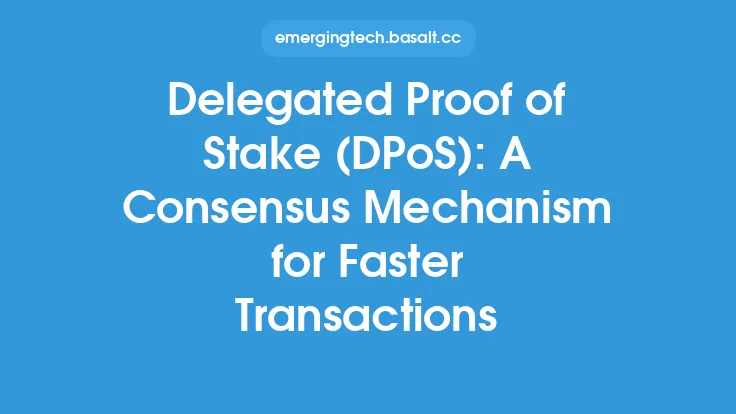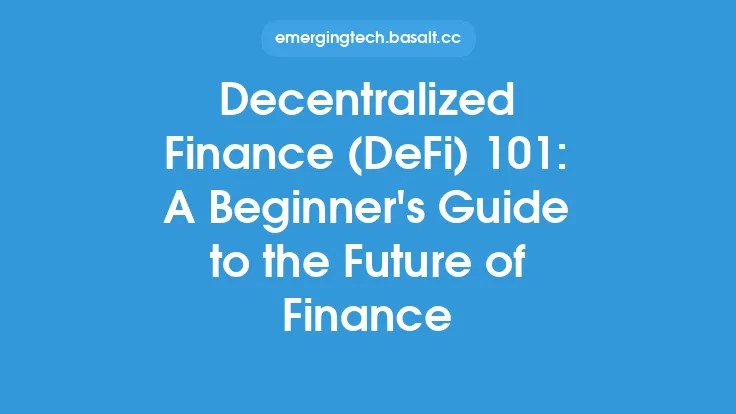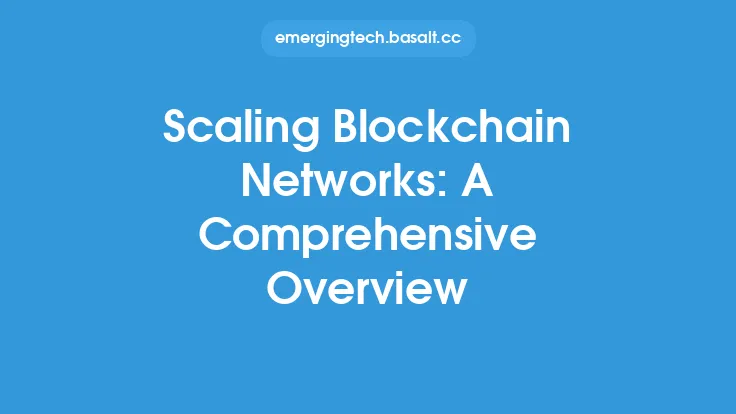The concept of consensus mechanisms is crucial in the blockchain ecosystem, as it enables the validation of transactions and the creation of new blocks in a decentralized manner. Among the various consensus mechanisms, Proof of Stake (PoS) has gained significant attention in recent years due to its potential to offer a more energy-efficient alternative to traditional consensus mechanisms. In this article, we will delve into the details of PoS, its workings, advantages, and limitations, to provide a comprehensive understanding of this consensus mechanism.
What is Proof of Stake (PoS)?
Proof of Stake is a consensus mechanism that was introduced as an alternative to the energy-intensive Proof of Work (PoW) mechanism. In PoS, the creation of new blocks is based on the validator's stake in the network, rather than their computational power. Validators with a larger stake in the network have a higher chance of being selected to create a new block, as they have more to lose if they act maliciously. This approach is designed to incentivize validators to act honestly and maintain the integrity of the network.
How Does Proof of Stake (PoS) Work?
The PoS mechanism works by selecting a validator to create a new block based on their stake in the network. The validator with the largest stake has the highest chance of being selected, but the selection process is typically randomized to prevent a single validator from dominating the network. Once a validator is selected, they create a new block and add it to the blockchain. The validator is then rewarded with the transaction fees associated with the transactions included in the block.
Advantages of Proof of Stake (PoS)
PoS offers several advantages over traditional consensus mechanisms, including:
- Energy efficiency: PoS is significantly more energy-efficient than PoW, as it does not require significant computational power to create new blocks.
- Faster transaction processing: PoS allows for faster transaction processing, as validators can create new blocks more quickly than in PoW-based networks.
- Increased security: PoS is more secure than PoW, as validators have a financial incentive to act honestly and maintain the integrity of the network.
- Lower barriers to entry: PoS has lower barriers to entry than PoW, as validators do not need significant computational power to participate in the network.
Limitations of Proof of Stake (PoS)
While PoS offers several advantages, it also has some limitations, including:
- Nothing-at-stake problem: In PoS, validators have an incentive to vote for multiple conflicting versions of the blockchain, as they have nothing to lose by doing so.
- Centralization: PoS can lead to centralization, as large stakeholders have more influence over the network than smaller stakeholders.
- Security risks: PoS is vulnerable to security risks, such as 51% attacks, where a group of validators control more than 50% of the network's stake and can manipulate the blockchain.
Variations of Proof of Stake (PoS)
There are several variations of PoS, including:
- Leased Proof of Stake (LPoS): In LPoS, users can lease their stake to other validators, allowing them to participate in the network without having to run a full node.
- Delegated Proof of Stake (DPoS): In DPoS, users vote for validators to create new blocks, rather than selecting them based on their stake.
- Pure Proof of Stake (PPoS): In PPoS, validators are selected based solely on their stake, without any additional factors.
Real-World Implementations of Proof of Stake (PoS)
PoS has been implemented in several real-world blockchain networks, including:
- Ethereum: Ethereum is planning to transition from PoW to PoS in the near future, with the launch of Ethereum 2.0.
- Tezos: Tezos is a blockchain network that uses a PoS consensus mechanism, allowing users to participate in the network by staking their tokens.
- Cosmos: Cosmos is a blockchain network that uses a PoS consensus mechanism, allowing users to participate in the network by staking their tokens.
Conclusion
In conclusion, Proof of Stake (PoS) is a consensus mechanism that offers a more energy-efficient alternative to traditional consensus mechanisms. While it has several advantages, including energy efficiency, faster transaction processing, and increased security, it also has some limitations, including the nothing-at-stake problem, centralization, and security risks. As the blockchain ecosystem continues to evolve, it is likely that PoS will play an increasingly important role in the development of new blockchain networks.





